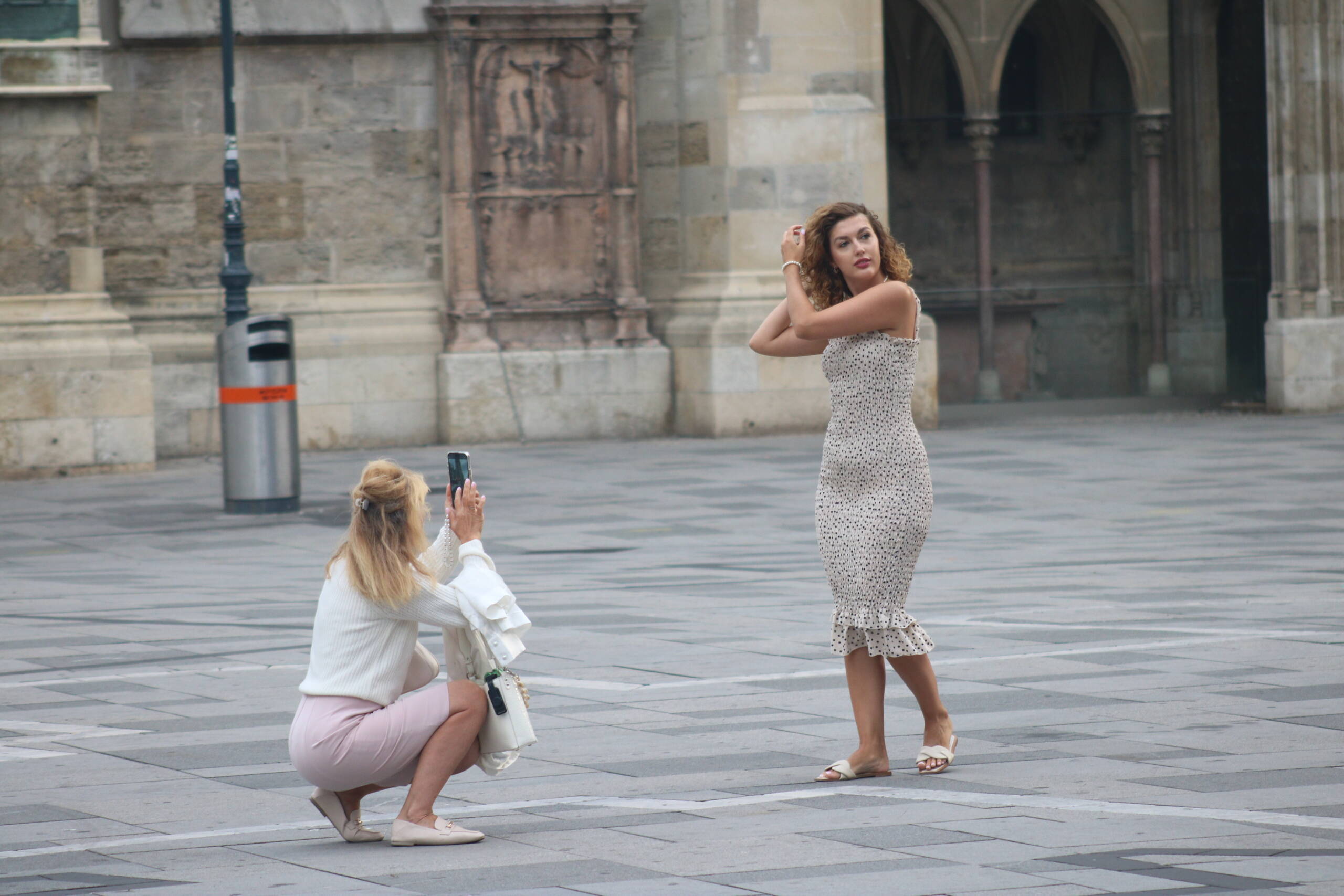Travel photography is more than just capturing a scene; it is about seizing the moment in a way that tells a story long after the trip is over. In this image near Vienna’s Stephansdom, we see two travelers engaged in precisely that—one posing gracefully, adjusting her hair with poise and elegance, the other crouched with focus, phone in hand, determined to frame the perfect shot. It’s a candid yet intentional scene, a moment of collaboration that turns sightseeing into artistry. Both deserve praise: the model in her chic, patterned dress embodying confidence and style, and the photographer, squatting low to find the right angle, proving that commitment to perspective is half the craft. Together, they show how travel photography becomes a dialogue between subject and storyteller.

To make your own travel photography truly memorable, think less about volume and more about meaning. Don’t just snap endless pictures of monuments or wide squares; instead, weave people into the frame. Human presence brings scale, emotion, and authenticity. Experiment with perspectives: crouch like in this photo, tilt the camera upward, or step back to capture movement in context. Avoid overly staged, postcard-style pictures where the person stands stiffly in front of a landmark. A touch of spontaneity—like adjusting hair, laughing, or walking into the frame—adds a layer of truth that a static pose never can.
Gear plays a role, but less than many believe. A phone camera, as shown here, is more than capable in bright city squares. For those who want to push further, a mirrorless camera with a prime lens (like a 35mm or 50mm f/1.8) gives flexibility and shallow depth of field that can turn a tourist shot into something cinematic. What not to do: don’t rely on heavy zooms for every picture, don’t shoot everything from eye level, and don’t obsess over technical perfection at the cost of atmosphere. Grain, blur, or a tilted horizon sometimes make the image more alive.
Ultimately, travel photography is about balancing place and presence. The Gothic arches of Stephansdom behind the subject whisper history and grandeur, while the modern act of framing a portrait grounds it in today’s experience. A memorable photograph doesn’t just show where you were—it tells why it mattered. That’s the difference between a fleeting snapshot and an enduring memory.
Leave a Reply